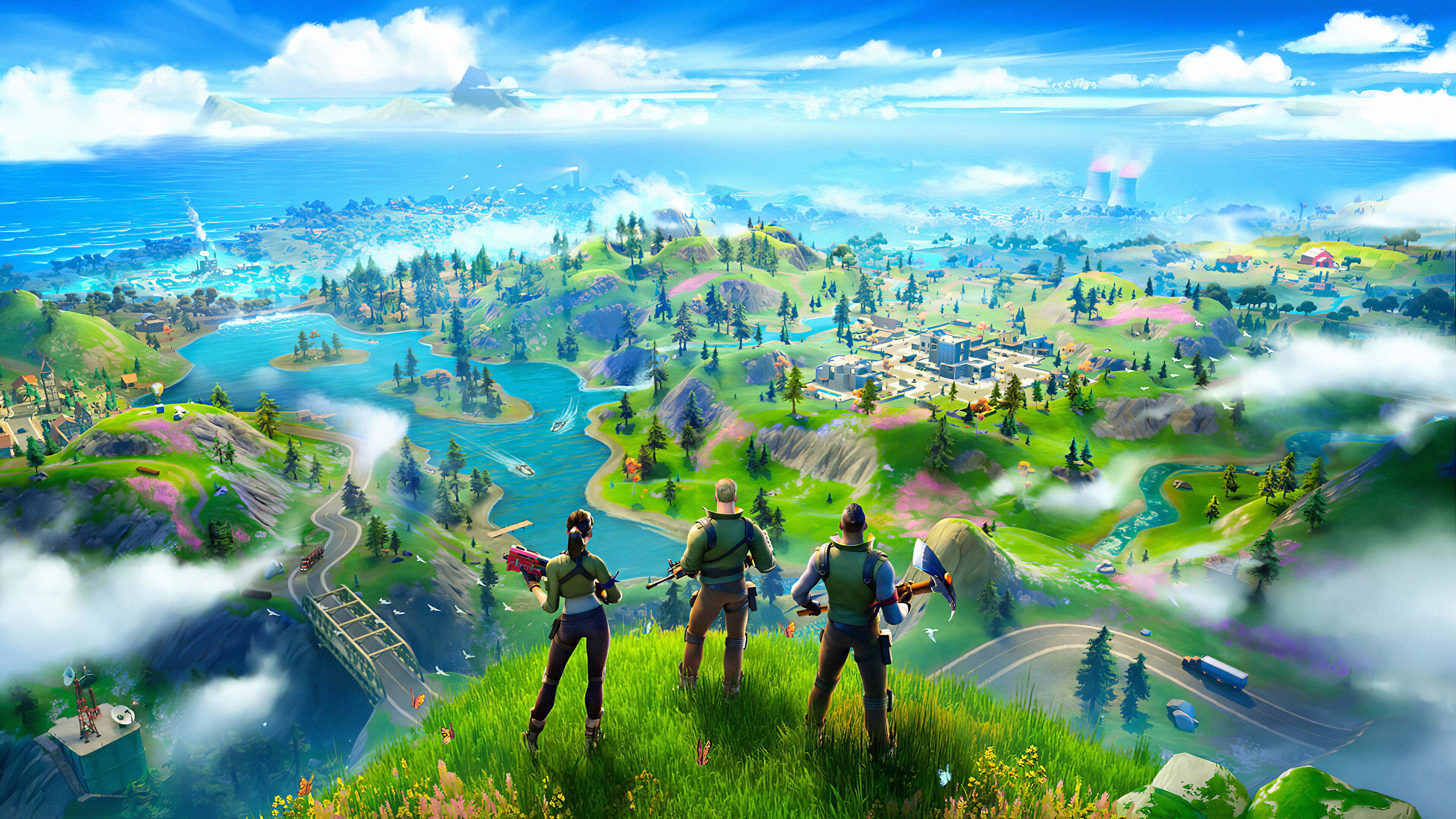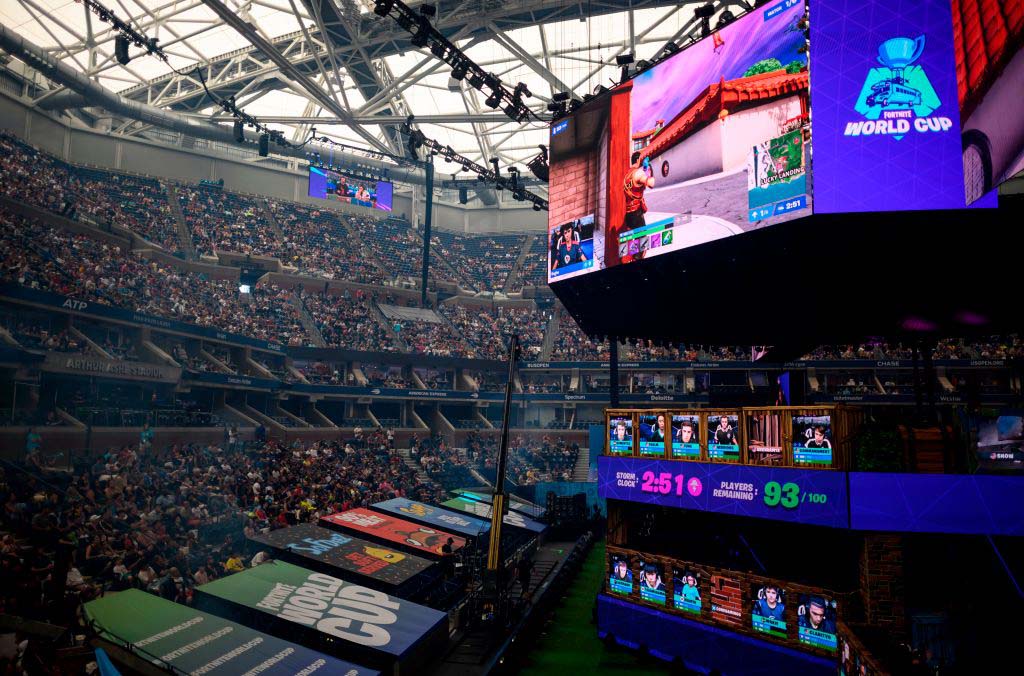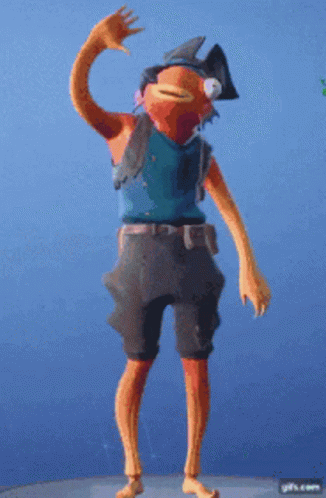Fortnite on YouTube: A Success Story.
How did this innovative game alter the landscape of existing YouTube Gaming communities?

In the last decades, YouTube has emerged as a dynamic platform revolutionizing conventional media consumption. Whether you are a sports enthusiast looking to enjoy some player highlights, a gaming fan keeping up with events, or someone simply wanting to bake a delicious cake at home, this platform always has exactly what you are seeking. Moreover, YouTube's impact extends far beyond its initial purpose. It has given birth to several online communities where like-minded individuals watch, discuss, and engage with content that resonates with their shared passions. These communities are at the heart of every YouTube channel, and every content creator aspires to foster a devoted and engaged audience that faithfully follows their content journey. In essence, YouTube has not only revolutionized how we access and interact with media but has also forged powerful virtual communities, making it an integral part of the modern digital landscape.

In this article, we will explore the interactions between gaming communities through the lens of the Fortnite success story, showing its unique dynamics that make them an important player in the Youtube landscape.
Youtube and its Content
In the digital era, YouTube has become a pivotal platform for gaming content, evolving from a mere video-sharing website to a thriving community for gamers worldwide. This section delves into the YouTube gaming landscape, revealing its dynamic growth, diverse demographics, and varied engagement patterns.
Many communities thrive on YouTube, and each category has its own unique characteristics. The major communities by far are Music, Entertainment, and Gaming. These are the categories which count the most subscribers, with billions of people interacting with them almost every day. The gaming community has always been a major player on YouTube, with millions of channels and billions of views, bringing together a diverse audience of players and viewers alike. Many famous games have emerged from this community and how brought millions of newcomers to interact with content in regards to these games. These include Minecraft, Grand Theft Auto, Call Of Duty, Fifa, League of Legends and more recently, Fortnite.
It's important to note that gaming communities represent a particularly unique case. Unlike passive viewers, they actively engage in discussions, share strategies, and even participate in live-streamed events, creating a vibrant and interactive ecosystem.
Quarterly Growth of Gaming Content on YouTube
The journey of gaming on YouTube is a story of exponential growth. A closer look at the quarterly growth data reveals significant insights into how gaming content has proliferated over recent years.
Demographics and Engagement in YouTube Gaming
Understanding the audience demographics and engagement patterns is crucial in comprehending the full scope of YouTube's gaming sector.
YouTube Gaming History
YouTube's journey in gaming is a remarkable narrative of growth and evolution. From its inception, the platform quickly became a primary destination for gamers to share their experiences, strategies, and insights. We now delve into the historical milestones of YouTube in the gaming domain, highlighting how it paralleled the rapid advancements in the gaming industry.
Through out years, we saw the rise of influential gaming channels and content creators who played a crucial role in shaping the platform. Channels like PewDiePie, Markiplier, and others gained massive followings, contributing to the growth of gaming as a major category on YouTube. PewDiePie is a special example as he strongly cemented his position as the most subscribed channel on YouTube, with more than 110 million subscribers as of December 2020.
The first graph tracks the change in subscribers (delta subs) over time from January 2017 to July 2019 for 3 of the biggest gaming channels: PewDiePie, Markiplier and Jacksepticeye. All three channels show variability in subscriber growth, with several peaks and troughs. Clearly, we can observe PewDiePie's channel stands out with two significant spikes, one reaching nearly 2 million new subs in a very short period The other two channels, Markiplier and Jacksepticeye, also show spikes, but they are less pronounced compared to PewDiePie's.
The second graph monitors the change in video views (delta views) within the same timeframe. Again, there's considerable fluctuation in monthly views for all channels. All three channels appear to have a similar pattern of views with peaks often coinciding. PewDiePie's channel again shows the most considerable individual spikes in views, although not as stark as with the subscriber growth.
Both graphs display that PewDiePie's channel has the most substantial fluctuations in growth and views, suggesting viral content or external factors influencing growth at specific times. The similar patterns between the channels might indicate that the gaming audience on YouTube has shared viewing habits or that events affecting one channel also affect the others due to audience overlap. It is interesting to note that the peaks in subscribers do not always coincide with peaks in views, suggesting that new subscribers may not always be immediately active in viewing content or that views can increase without a corresponding growth in subscribers, possibly due to viral content being shared outside of the subscriber base.
More generally, observing the overall delta views for major gaming channels which make videos on certain games, we can extract various insights.
We can observe the steady increase in gaming views on YouTube over the years. The graph highlights key periods of growth, indicating the rising popularity of gaming content before the advent of Fortnite.
Noticeable spikes in viewership correspond to significant gaming releases or events. This trend demonstrates YouTube's sensitivity to the gaming industry's dynamics and its role as a reactive platform for gaming content.
The heatmap presented above is a rich tapestry illustrating the intricate correlations between the viewership of various gaming franchises. It's a snapshot of YouTube's gaming sphere before Fortnite's emergence, where the ebb and flow of gaming views were deeply intertwined with the release schedules of blockbuster titles.
As we decode the color gradients, we can discern that certain games resonate more closely with each other, suggesting overlapping fanbases and shared gaming experiences. The stronger correlations, highlighted by warmer colors, reveal a fascinating narrative - games within similar genres or gameplay experiences tend to captivate similar audiences, leading to parallel trends in viewership.
For instance, the correlation between 'Grand Theft Auto (GTA)' and 'Call of Duty (COD)' extends beyond mere numbers; it's a reflection of the broader action-adventure and shooter genres' appeal. Players who revel in the anarchic freedom and expansive narratives of GTA's open world seem to also find a home in the adrenaline-fueled, high-stakes scenarios of COD's battlegrounds.
Similarly, GTA's correlation with 'Minecraft' offers an intriguing insight. At first glance, they might cater to different gaming sensibilities - one, a sandbox of urban crime, and the other, a canvas for creative expression. Yet, the common thread of open-world exploration and the ability to shape one's experience within the game world resonates with a wide spectrum of gamers.
The heatmap also serves as a testament to the dynamic nature of gaming trends and interests over time. As the gaming industry evolves, so too do the preferences of the gaming community, with each new release or gaming phenomenon leaving its imprint on the collective consciousness of YouTube's gaming enthusiasts.
Reflecting on YouTube's past in gaming, it's evident that the platform has not just been a passive player but an active participant in the gaming industry's evolution. The rise of iconic content creators and the platform's responsiveness to industry trends have cemented YouTube's position as a cornerstone of digital gaming culture. This historical context sets the stage for understanding Fortnite's unprecedented impact, which we will explore in the following sections.
However, a major player was yet to emerge, one that would redefine the gaming landscape and leave an indelible mark on YouTube's gaming community: Fortnite. In this article, we will discuss how Fortnite, a free-to-play battle royale game, has become a global phenomenon, captivating millions of players and viewers alike. We will also evaluate how distinguished gaming categories evolved over time, and visualize Fortnite's impact on the gaming landscape. More importantly, Fortnite's rise to success brings forth several questions:
- How did this new game engineering (open world vs. battle royale) and business model upset the classic game industry?
- Did Fortnite attract pre-existing gamer YouTubers, or were Fortnite creators newcomers to the platforms?
- Did Fortnite attract viewership from established gaming communities, or did it build its own distinct audience?
- Do active authors who engage in extensive commentary participate in a singular community, or do they contribute to various communities across different games?
- How Fortnite transformed various aspects well beyond the confines of the gaming industry?
- How did established games like Minecraft withstand the impact of a successful release like Fortnite?
The Rise of a Gaming Giant
In July 2017, the gaming landscape witnessed what would be later a seismic shift with the release of the early access of Fortnite, a brand new battle-royale game. The game, developed by Epic Games, not only marked a significant milestone for the battle royale genre but also became a global sensation, captivating players and YouTube communities in ways that few could have anticipated.
A New Game Idea
Initially introduced as a cooperative survival game, it was the addition of the free-to-play battle royale mode, released on September 26 of the same year, that propelled Fortnite into unparalleled success.
The battle royale genre, characterized by a last-player-standing competition in an ever-shrinking play area, was previously led by PlayerUnknown's Battlegrounds (PUBG) but Fortnite brought a fresh and accessible approach. Its colorful aesthetics, whimsical characters, and innovative building mechanics resonated with a broad audience, attracting both seasoned gamers communities but also newcomers alike.
Fortnite's impact extended beyond its gameplay mechanics. The introduction in the late 2017 of the "Battle Pass" system, offering cosmetic rewards and challenges, revolutionized the monetization model for free-to-play games. This innovative approach, coupled with the game's online nature, became a significant advantage. As an online game, Fortnite offered players the opportunity to explore its vast map while teaming up with friends or randomly selected players. This communal aspect allowed players to forge real social connections, spending hours immersed in the game and fostering a sense of community. Let's delve deeper into these interactions.
YouTube Community
Indeed, as we introduced above, gaming communities are very different from other YouTube communities. Most viewers play the games themselves and are therefore all the more involved when it comes to following the exploits of their favorite YouTubers. Its time to recall and try ton answer to some of our research questions. To answer these questions, we proceed in the following way: We handpicked the top 5 YouTubers of all time for the game category we chose. This choice makes more sense here to have an answer to these questions, as lots of YouTubers play multiple games and can therefore attract a diverse audience. However, the ones we chose mainly propose content on these particular games. However, for the research on the authors and how they behaved across the different communities, we chose to select a sample of 25 millions comments from more than 1.5 millions authors on more than 3 millions gaming videos. We then used the tags under the videos they commented on to attribute a game to the commented video.
We can already observe that even by selecting the most famous YouTuber for each game, some games are more watched than others. Additionally, Fortnite, Minecraft, and League of Legends contain YouTubers with the best rankings. For instance, in the case of GTA, 'DarkViperAU' is not as well-known in terms of subscribers, even though he is famous within the GTA community.
First, when analyzing the general data of these channels, we observed that even though Fortnite YouTubers published fewer videos than other gaming channels, they still hold the highest rankings in terms of subscriber count. This shows us that, in a short amount of time, Fortnite YouTubers seem to have closed the gap with strongly established YouTubers who were playing games that were already well-known. But we have to be cautious; Fortnite YouTubers might be well-known today with Fortnite, but did they really start producing content when Fortnite came out, or have they been on YouTube for years?
When looking at the join date of famous YouTubers, we observe that they all started their channels between 2006 and 2016, before the creation of Fortnite. For example, 'Ali-A' began his channel in 2006 but is now known for his Fortnite videos, even though he initially produced only Call of Duty content. The difference: he was getting 10k views before and 500k today. The same pattern repeats for other YouTubers. For instance, the most famous Fortnite player, 'Ninja,' started his channel in 2011, but like 'Ali-A,' he was playing another famous FPS game, Halo. More generally, when looking at these YouTubers, they were all already producing content, but when they switched to Fortnite, everything changed! They became real opportunity takers.
Now that we know that the famous Fortnite YouTubers of today are, in fact, seasoned platform creators who waited several years before gaining fame, we can delve into their communities. While these YouTubers owe their current fame to their content, creativity, and talent, it's primarily due to their communities that began following them. But who are these followers? Are they new to the platform, drawn to YouTube by the release of Fortnite? Or do they come from another well-established community?
To answer this question, we can begin by delving into the time series data. By taking all the game category time series, averaging them by game, and computing their correlation coefficients with Fortnite, we obtained these impressive results.
Fortnite shows a strong negative correlation with Minecraft and FIFA in terms of delta views per week! Based on these correlations, it appears that a significant portion of the Fortnite audience comes from the Minecraft community. Examining the time series delta view graph from the previous question makes it clear that Fortnite and Minecraft seem to be mutually competing for views. But what about the comments?
As mentioned earlier, comments are the best metric to evaluate the real community for a game. While views serve as a good indicator for the general audience and success of a
game, analyzing the strength of the comments community and its origin is crucial to measure the community impact. First, as mentioned earlier, we based this analysis on a sample of 25 million comments. Within this sample, we observed a high proportion of Fortnite
and Minecraft comments, approximately 1,800,000 and 4,300,000 comments respectively. We then measured the proportion of new commenters under Fortnite videos who produced their first comments specifically under a
Fortnite video, compared to new commenters that were already commenting on another game.
We observe a significant amount of new authors for who their first comments was under a Fortnite videos. Among the 81.2% authors that had already made a comments, what was their community? Was it similar to the Minecraft community, like the viewers?
And yes, similar to the views, the majority of new Fortnite authors were former Minecraft authors. This plot shows the proportion of authors who usually commented on these games between 2015 and early 2017, which then commented on Fortnite videos 2017 onwards This shows that almost 50K active users commented on Minecraft videos and then commented on Fortnite videos after the game's release.
We can also answer the question: Do active authors who engage in extensive commentary participate in a singular community, or do they contribute to various communities across different games? To do so, we selected the top 30 most active authors in our dataset and computed the percentage distribution of the games they commented on.
For the truly active authors, they all have a favorite game (either FIFA, Fortnite, etc.), but it is rare that they restrict their comments to one category. Except for 9 authors who have almost or exactly 100% of comments on a specific game (mostly Minecraft authors), active authors comment under a lot of other games in addition to their favorite game.
All these pieces of evidence of community 'migration' motivated us to create a compelling illustration of this story: the visualization of the behavior of gaming communities from 2012 to 2019 (in music). This visual graph clip highlights how a YouTube gaming landscape formerly dominated by Minecraft was completely transformed by the release of Fortnite. The graph nodes represent the size of the communities in terms of live comments, and the flow indicates the number of comments migrating from one community to another.
Pop-Culture Impact
Nevertheless, stopping at Fortnite's impact on Gaming Communities would be nonsense since its influence transcended the gaming world, leaving an indelible mark on mainstream entertainment. The game's iconic emotes and dance moves have become worldwide phenomena.

Honestly, have you ever seen a video game feature being reproduced in one of the most followed events in the world? Yes, Fortnite has done it. The "Take the L" dance from its game found its way into the FIFA's 2018 World Cup Final, via Antoine Griezmann who used it as its goal celebration. By making his dance in this 1.12 billion viewers event, Griezmann had a major influence in Fortnite community development, interacting with another community: the sport one.
Fortnite's influence reaches beyond its distinctive emotes, extending into the realm of live events that leave a significant imprint on both the gaming community and mainstream culture. The game has become a virtual stage for groundbreaking live concerts featuring some of the world's most renowned artists: Marshmello, Travis Scott, Ariana Grande, Eminem, and others took place on the virtual stage.
These events, represent a revolutionary fusion of gaming and music communities, attracting millions of players and viewers alike while also generating an immense online buzz. YouTube Gaming becomes a primary hub for reliving or catching up on these - often very hard to access - virtual concerts, contributing to a surge in views for related content, including concert highlights, reactions, and behind-the-scenes footage.
Recently, Fortnite made once again the headlines by announcing its upcoming virtual event, the "Fortnite Festival," with The Weeknd set to headline the festivities.
Future Impacts on YouTube Gaming
As the initial fervor surrounding Fortnite's naturally begins to slowdown, the landscape of YouTube Gaming finds itself at a crossroads, bringing questions about its future trajectory. The era of Fortnite, while transformative, has also highlighted the dynamic nature of gaming trends and the need for the platform to adapt to emerging preferences and innovations.
Eductional Purposes
Fortnite, despite its immense popularity and impact on the gaming industry, has not been immune to the pervasive issue of online harassment. Both in-game and on YouTube, users have reported incidents of verbal abuse, offensive language, and unsolicited harassment, with content creators facing discriminatory comments, threats, and cyberbullying.

More than ever, YouTube has the potential to foster positive change in addressing the issue of online abuse through collaborative efforts with organizations and associations dedicated to combating harassment and promoting digital well-being. Collaborative initiatives with these latest may include the implementation of advanced content moderation tools, educational campaigns to raise awareness about the consequences of online abuse, and the creation of support networks for users affected by harassment.
Engaging with these organizations can also facilitate the development of community guidelines that emphasize inclusivity, respect, and responsible online behavior. This proactive approach aligns with the platform's commitment to promoting positive user experiences and addressing the complex challenges associated with online interactions.
E-Sport and Streaming
E-Sports, the competitive dynamic and rapidly expanding sector of the gaming industry, has demonstrated remarkable growth, reaching a market value of around $1.39 billion in 2022. This significant valuation shows the increasing commercial viability of competitive gaming but also the explosion of its community.
Taking the example of Fortnite, we can mention the Fortnite World Cup 2019 that gathered more than 23'000 people in the Arthur Ashe Stadium in Queens (New York) and concurrently more than 2 millions of online viewers. The event had at key a $30 millions total prize-pool, including $3 millions for the winner.

As the E-Sports industry will continue to grow, YouTube Gaming has a vested interest of becoming a key destination for its enthusiasts. Therefore, YouTube Gaming evolution will also be influenced by advancements in the platform's streaming technology and viewer engagement features. As streaming quality improves and interactive elements are enhanced, the platform may attract a more engaged and participatory audience.
This will be a major race against given the dominance of platforms such as Twitch and the recent surge in gaming streaming on prominent platforms like Discord, Facebook (through Facebook Gaming) or even Amazon Prime.
Conclusion
To conclude, we discovered that Fortnite acted as a perfect springboard for Gaming YouTubers. Thanks to the virality of this fresh new idea game, many became international YouTube stars and built tremendous communities. We observed how viewers reacted to this new game, particularly finding that many who were active in the comments section of already well-established games didn't hesitate to engage with new Fortnite creators and follow them. We also broadened our perspective to see how Fortnite and its revolutionizing collaborations ideas changed communities beyond the boundaries of YouTube, attracting broader communities.
As the fervor arround Fortnite is slightly vanishing, it has also marked the imperative for YouTube to adapt following the gaming trends. The exploding e-sports community, exemplified by the success of events like the Fortnite World Cup, presents a lucrative opportunity for YouTube Gaming. However, to secure its position the platform must prioritize innovation in streaming technology, enhance viewer engagement features, and potentially explore exclusive partnerships. On the other side, phenomenons like Fortnite also demonstates the possible poor behavior of users inside the gaming community and its terrible societal impacts. The platform's has to show commitment addressing this global online problem.
While the AnalyticAvengers team will be waiting for the next Fortnite to arise, we hope that you will now have a sharpened eye on the world of YouTube communities...

